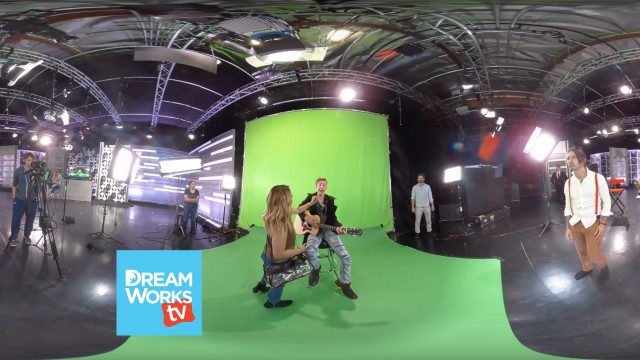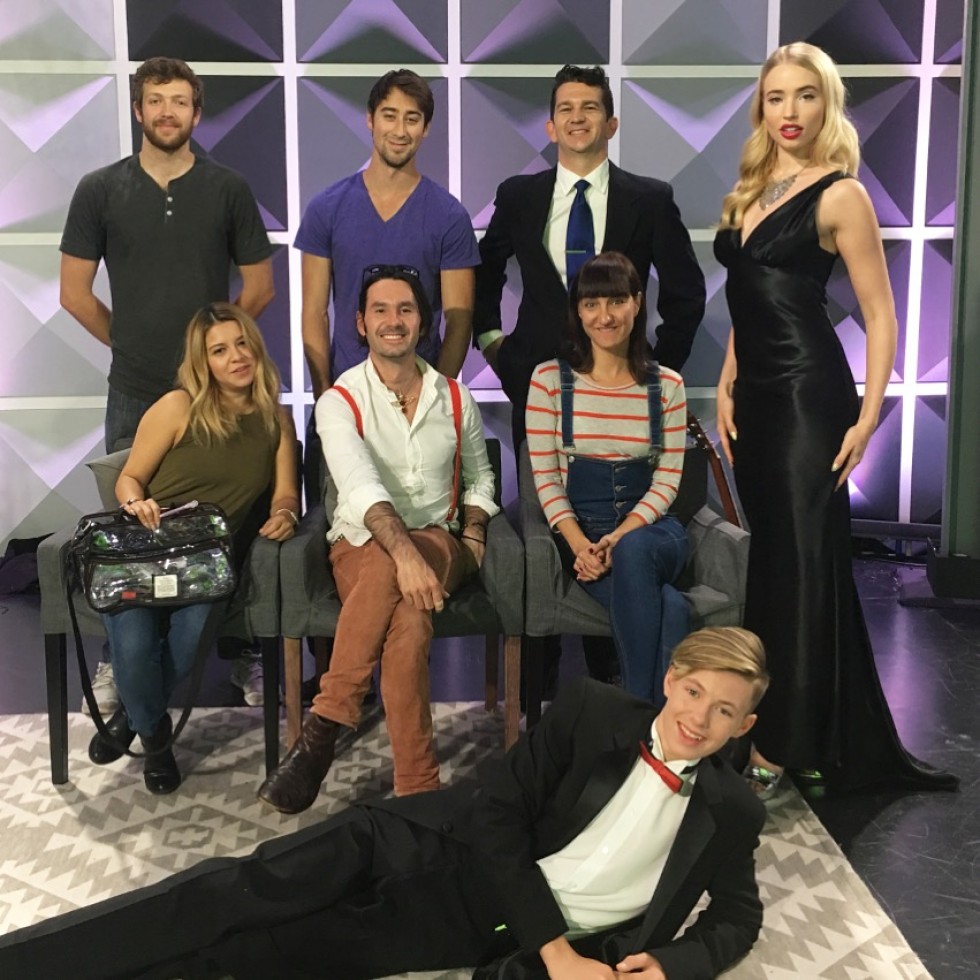“Mama Said” by Lukas Graham – Cover by Mackenzie Sol 360°/VR | DreamWorksTV
Kids digital entertainment brand DreamWorksTV took its first step into 360/VR in a music video that takes 360 filmmaking technique and makes it part of the story. Producer Matt Levy worked with Director Aton Sanz-Katz to created a 360 experience that gives a glimpse of a Hollywood set behind-the-scenes, with all the cast and crew visible. The 360 video begins with Mackenzie Sol walking on set onto a green screen. The set disappears around him as the background changes into different virtual worlds, showing the before-and-after of the post-production process. It’s a clever combination of storytelling, talent and technical know-how. The post was done in Adobe After Effects and Premiere Pro with Mettle 360/VR plugins SkyBox Studio and SkyBox 360/VR Tools.
“Mama Said” by Lukas Graham – Cover by Mackenzie Sol (360° Music Video)
Q&A with Aton Sanz-Katz, Director/Animator, DreamWorksTV
How did you come up with the concept?
My producer/creative partner Matt Levy and I have been wanting to do a 360 video for DreamWorksTV since June. The opportunity came to work with a great young talent named Mackenzie Sol, who wanted to cover Lukas Graham’s “Mama Said”. Matt insisted that we should focus on story and visuals so that the video could be compelling enough to entertain, without having to rely on the fact that it is a 360 video. He insisted that even someone who couldn’t use the technology should be able to enjoy it just by watching it on their desktop.
We drew inspiration from various places. The concept of “Virtual Reality” itself, relates to Hollywood and entertainment in a sense, as well as the imaginative usage of green screen by Action Bronson. So we ended up with a concept that gives us a glimpse of Hollywood from behind the scenes, told from a tongue in cheek perspective, drifting into various worlds that convey the rags to riches story portrayed in Lukas Graham’s “Mama Said”. Mackenzie Sol in this video travels from the bottom of the ocean, through the deserts of Egypt, finally reaching his dream of making it in Hollywood.
How did you coordinate all the different aspects of the production?
I am very fortunate to work with an incredible team of people at DreamWorksTV. Matt Levy handled coordination between Mackenzie and his manager as well the communication with the heads of DreamWorksTV Birk Rawlings and Live Action, Judy Meyers. Jeremy Chilvers, an exceptional line producer, with the assistance of Oz Ozmen ( Associate producer) managed dates, budget, location, and the coordination of cast and crew. Doma Schrank (Sound) reconnected me with an old friend Nina Kaze (wardrobe) of Cherry Pick Vintage, she grasped the concept immediately then I left it up to her expertise.
What kind of camera did you use?
Besides the shoot, we ran various tests using freedom 360 GoPro rig, Kodak PixPro, and Canon 5D Mark iii. The final 360 capture was on the Kodak PixPro. 5D Mark iii was used to capture the closeups of Mackenzie used on the screen of the flying blimp during the cityscape.
Software and hardware?
Autopano Video Pro and AutoPano Giga by Kolor was used for the stitch.
Most of the workflow was in After effects using “Mettle Skybox Studio”. I relied heavily on “Skybox Creator Script”, which allowed me to build on Element 3D as well as to add Optical Flares (Video Copilot).
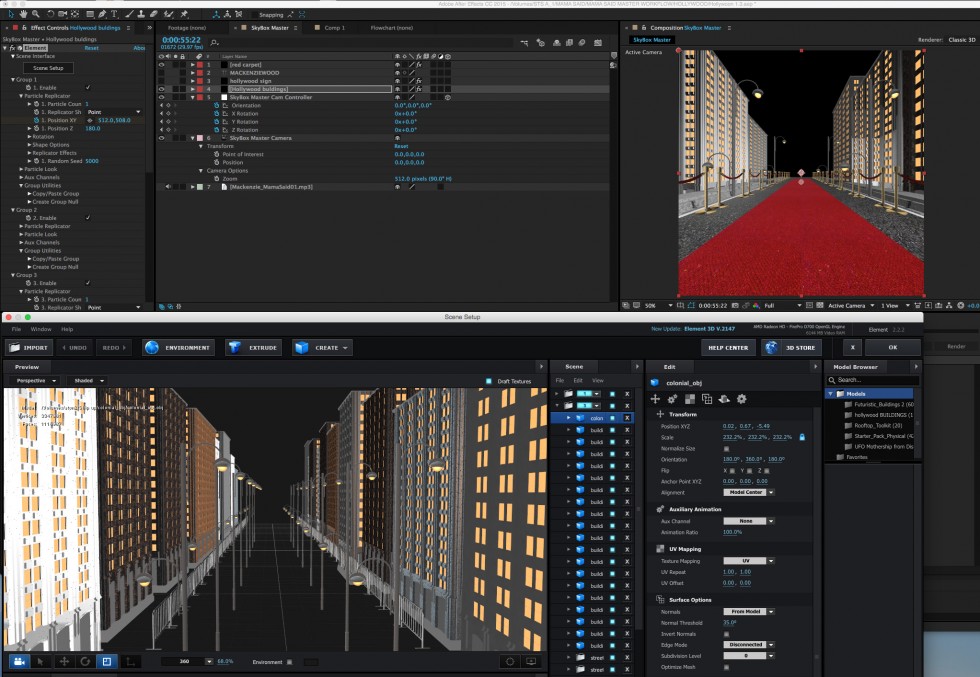
“Skybox Extractor” and “Skybox Converter” were used for live footage to handle tasks like keying and compositing of 2D Elements as well as for camera rig removal.
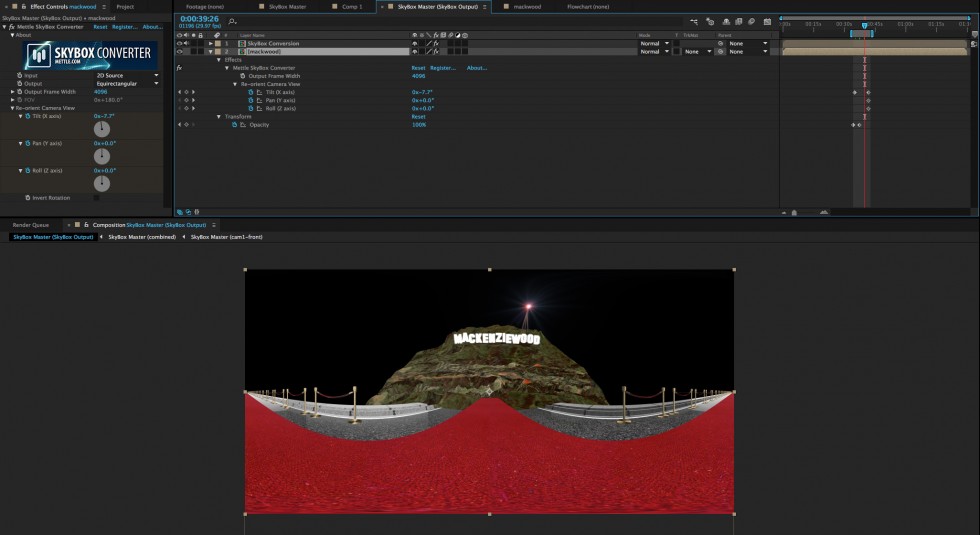
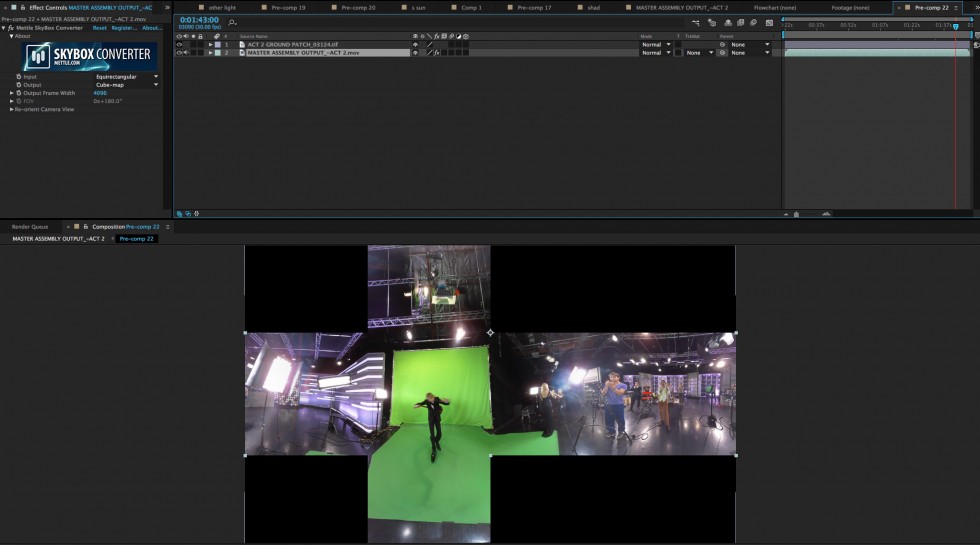
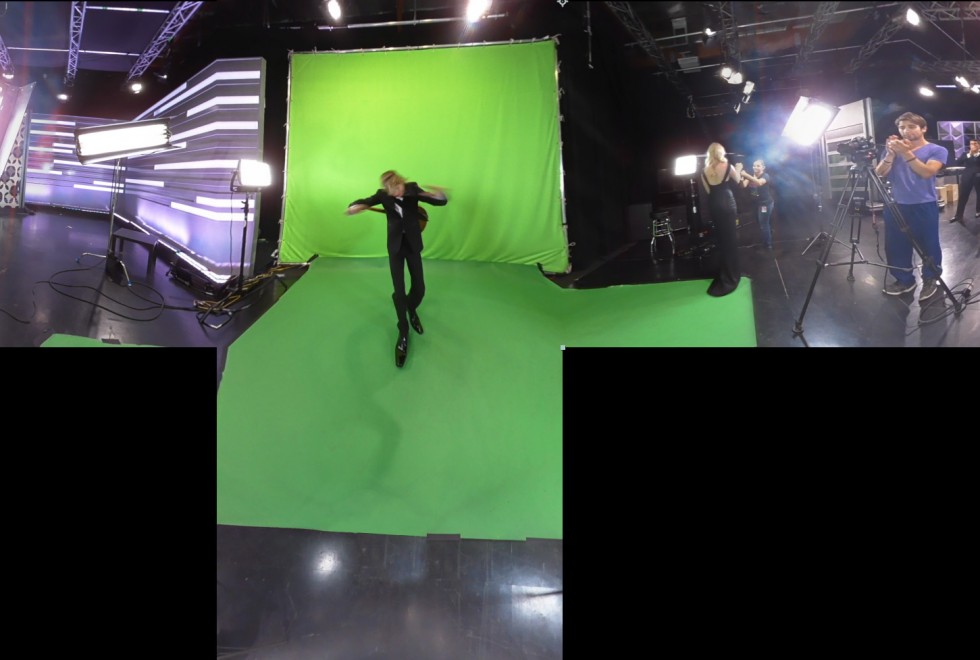
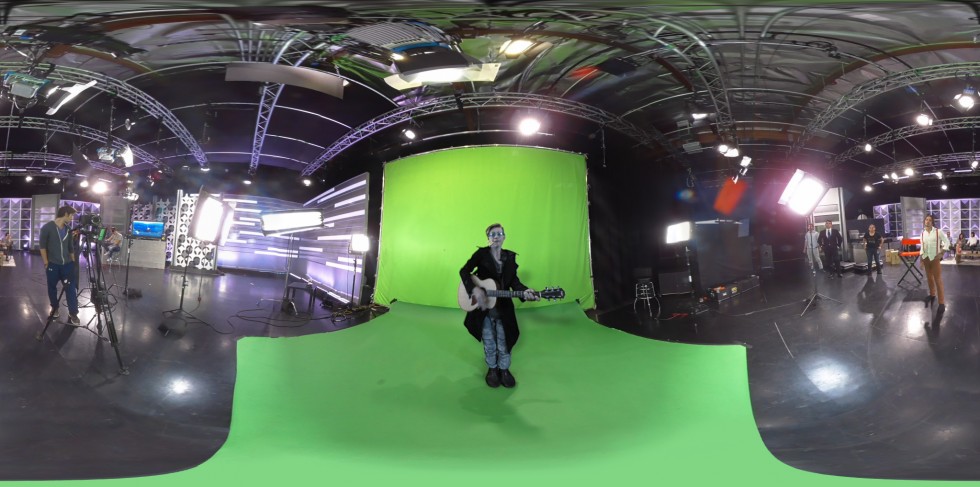

The work was then brought into Adobe Premier with “Skybox 360 VR Tools”
“Mettle Skybox Project 2D” and “Mettle Skybox Rotate Sphere” allowed us to fly titles with ease and to add additional elements to hide flaws. In particular, the ocean scene where a starfish was used to hide flaws in the Nadir.
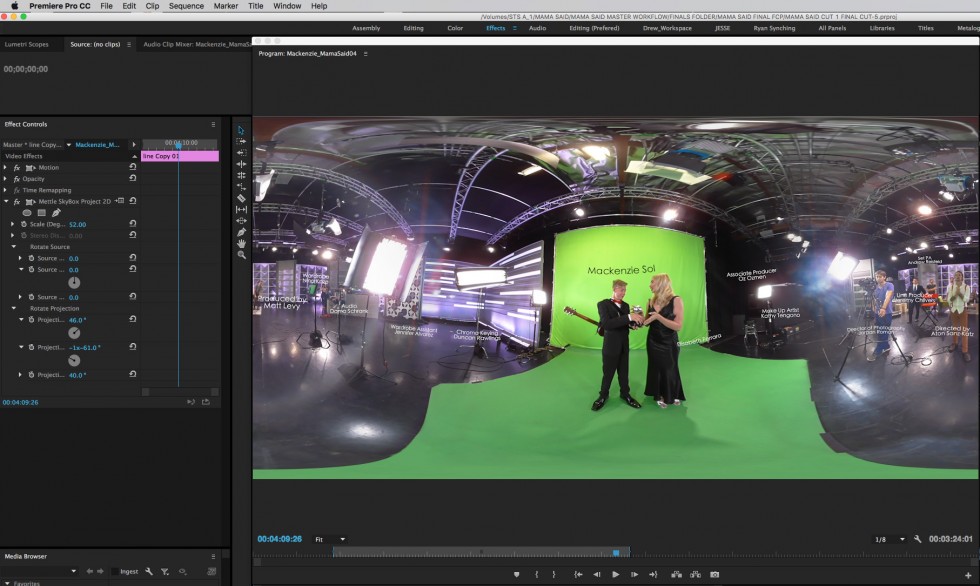
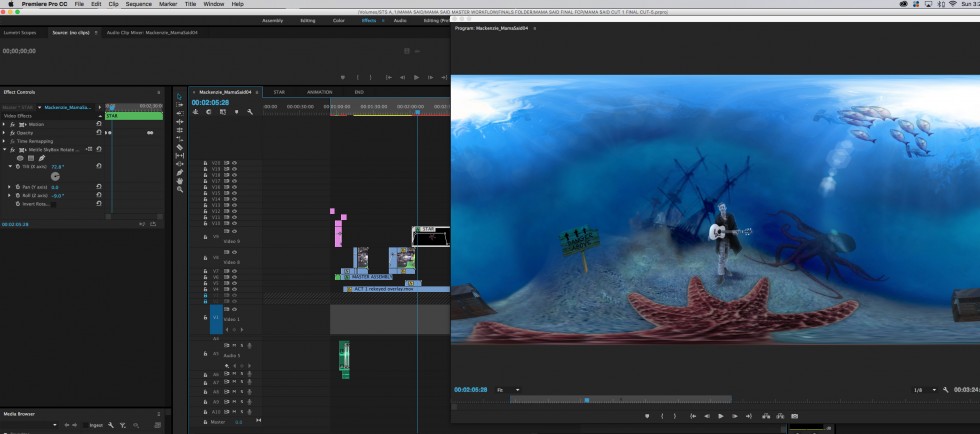
What did you learn about 360 production from producing this video? Do you have any tips you can pass on?
This was the most ambitious 360/VR project I’ve taken on regarding VFX. The biggest challenge was finding methods to tackle situations. The greatest thing about Mettle is that the tools are user friendly, so once you understand them, you are free to play and attain desired results.
Prior to the actual shoot we spent nearly a month of just testing. Initially we wanted to shoot this on the GoPro Odyssey rig, but it wasn’t feasible to attain one for the entire testing period. We looked into the Samsung Gear 360, ran set test with GoPro Freedom 360 as well as Kodak PixPro.
For the actual shoot day, Mackenzie and Elisabeth (female lead) were able to watch a full test cut on google cardboard, with my line producer Jeremy Chilvers and I did playing the roles of “Mackenzie” and “Beauty Queen Award Presenter” so that they could visualize their role and the environment around them.
The animated environments were also played in real time on a large set monitor during shooting. Without that, we would have been directing blindly. My biggest advice is to pay strong attention to your pre-production, you will run into roadblocks, and you might not attain what you desire right away so give yourself time for trouble shooting, testing and experimentation.
How do find 360 vs. regular video production?
The pace of workflow is different.
In the traditional method, you get into a flow with cast and crew that is constant. With 360 you don’t know exactly what you are capturing, so you have to stop the flow to make sure everything is working before you move on to another set up. We would shoot until we had several good takes, then give everyone a break to test the stitch, and make sure talent would stay within the boundaries of the greenscreen. When shooting at this rhythm, you have to play close attention to the ca st and crew’s gas tank because it takes more energy to rev and cease the engine, then to keep them in the traditional constant flow.
How did you create the undersea environment?
The undersea environment was a matte painting created in photoshop. Brought to life in Adobe After with techniques taught to me be fellow artists at DreamWorksTV, who are incredible at what they do. Drew Hamilton (Production Coordinator), Jesse Martinez, Jesse Henderson, Matt Schneck (Animator) who introduced me “Puppet Pin”, and Evan Bentz (VFX specialist). Another artist here, Duncan Rawlings was integral with the chroma-keying, as we faced some challenges here.
A good example of how animated lighting effects and “Puppet Pin” bring a scene to life is when you look at the zenith of the underwater environment, where you see Hammerhead sharks circling above with the rays from the sun radiating through the water.
Thanks so much! What a great combo of so many different techniques all coming together. A true team effort! We look forward to seeing your next 360 project. 🙂

Read the Forbes article: How DreamWorksTV Hit 1 Billion Video Views In 2 Years
DreamWorksTV has only been around for two years, but it can already boast about reaching two incredible milestones. The family-friendly YouTube channel, founded by DreamWorks Animation in 2014, now has over two million subscribers and over one billion video views.
Mettle Skybox Suite has joined Adobe.
Mettle Skybox Suite of plugins will be exclusively available as part of your Creative Cloud membership through deep, native integration with Premiere Pro CC and After Effects CC. Adobe Creative Cloud will offer an end to end experience for crafting rich and compelling VR/360 experiences.
Learn more – Adobe and Mettle VR: 360 degrees better
